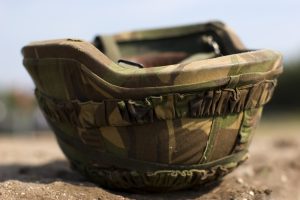Exploring military trauma in the Iraq war
The conflict in Iraq, that began in 2003 and ran until 2011, is arguably one of the most divisive and controversial conflicts in recent memory. No matter how history ultimately looks upon the war, there are several lessons we can take from it, particularly in terms of trauma care in the battlefield. Here, Celox Medical’s Toni Murch, MCPara, a class I combat medical technician that served as a close protection medic in the Iraq war from 2003–2006, explains.

“in the time periods of the war studied, deaths per month has doubled, with increases in both injury severity and number of wounds per casualty” J.F Kelly et al (2008)
The technologies available for managing catastrophic bleeds in combat have advanced significantly, allowing more soldiers to survive war injuries
Even today, almost a decade after the conflict officially ended, there is still some uncertainty about the accuracy of injury and mortality statistics from the Iraq war. Figures reported in 2013 put the total direct war deaths at 189,000, with approximately 32,223 troops physically injured.1
One thing we have seen evidenced, however, is that the injuries sustained by troops during the war increased in severity as the conflict progressed.2 This was the conclusion of a study by JF Kelly et al. in 2008, assessing and comparing the injury severity score of wounds from 2003 and 2004 to 2006. The authors noted that “in the time periods of the war studied, deaths per month has doubled, with increases in both injury severity and number of wounds per casualty”. What we can draw from this is that wars only get progressively more violent as they go on. Not just in terms of the overall death toll, but also the injuries and suffering of service personnel and civilian casualties.
Minimising the harm caused to troops and civilians is the primary focus of military medics, which is why we see medical care technology in the battlefield constantly developing. Since JF Kelly’s study, the technologies available for managing catastrophic bleeds in combat have advanced significantly, allowing more soldiers to survive war injuries.
It was this clear need to help more injured soldiers return to their families that partly inspired the development of Celox’s patented chitosan-based haemostatic technology in 2006. We are now on the fourth generation of this haemostatic technology in the form of Celox Rapid, a fast-acting haemostatic gauze that can reduce compression time to 60 seconds, or until bleeding stops.3 This makes it perfectly suited to the intense, high pressure environment of the front line.
The development of Celox has demonstrably helped soldiers in the field. A 2018 retrospective study by M Winstanley, J E Smith and C Wright analysed data from the UK Ministry of Defence (MOD). This data, spanning 2003 to 2014, focussed on the Iraq and Afghanistan conflicts and specifically sought to determine the effectiveness of haemostatic agents in treating catastrophic haemorrhages.
This research showed that of the three haemostatic dressings used — Celox, Hemcon and Quickclot — during the examined period, only one presented a statistically significant improvement in survival: Celox. Notably, the increase in survivability with Celox haemostatic gauze was most evident in more severe injuries.4
As the research concludes, “[the outcome of this study] supports the continued use of haemostatic agents as part of initial haemorrhage control for patients injured in conflict.” This is yet another valuable lesson to take from the Iraq war. Haemostatic agents are shown to help more troops survive even potentially fatal injuries, so medics should ensure they’re equipped with the most effective ones possible.4
Years after the Iraq war officially ended, the repercussions of it are still being felt in the region. As protracted warfare becomes more prevalent, we must all heed the lessons of this conflict to minimise the damage and death in the future.


